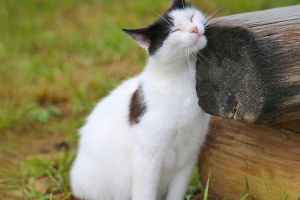Imagine living for over 200 years. While that may seem like science fiction for humans, for some giant tortoises, it's a very real lifespan.
These ancient reptiles—icons of islands like the Galápagos and the Seychelles—have fascinated biologists for centuries. But what exactly allows them to live such incredibly long lives?
In this article, we'll dig into their biology, lifestyle, and what science has discovered about the true secrets behind their longevity.
Giant Tortoises: An Overview
Giant tortoises, most famously the Galápagos tortoise (Chelonoidis nigra) and the Aldabra giant tortoise (Aldabrachelys gigantea), are among the largest and longest-living land animals. These creatures can weigh over 400 kilograms and reach shell lengths of more than 1.2 meters.
But it's not just their size that stands out—it's their impressive lifespans. Some individuals have been documented living well over 150 years, and possibly even 200.
The Power of a Slow Metabolism
One of the most critical factors contributing to their long life is their exceptionally slow metabolism. A tortoise's body doesn't burn energy the way most mammals do. Instead, everything from their digestion to their movement happens at a slow pace. This low metabolic rate reduces the wear and tear on cells, slowing down aging.
Because of this slow pace, giant tortoises don't need to eat often, and they can survive long periods without food or water. Their energy-efficient biology also means their organs age more slowly compared to faster-living animals.
Heartbeats and Lifespan
There's a well-known idea in biology called the "rate of living" theory. It suggests that animals with faster heart rates and metabolisms tend to have shorter lives. A hummingbird, for example, has a rapid heartbeat and lives only a few years. A tortoise, on the other hand, has a heartbeat of only about 6 to 10 beats per minute when resting.
This slow heartbeat, combined with low oxidative stress in their cells, means that their tissues remain healthier for longer. In fact, studies show that giant tortoises have high resistance to certain types of cellular damage that typically drive aging.
Living Without Natural Predators
Many giant tortoises evolved on remote islands with very few natural enemies. Without the pressure of predators, these reptiles were free to live slowly and safely. They didn't need to be fast or aggressive, which allowed them to develop traits that support a longer life—such as a strong, protective shell and low-stress lifestyles.
Their island homes also mean fewer environmental changes and less exposure to diseases that often shorten the lives of animals on the mainland.
Genetic Secrets of Longevity
Recent genomic studies have uncovered specific genes in giant tortoises that may be linked to cell repair and cancer resistance. One of the challenges in aging is that cells mutate over time, sometimes becoming cancerous. But giant tortoises seem to have enhanced abilities to detect and fix damaged DNA before it becomes a problem.
These genetic adaptations may act like an internal "repair team," extending their healthy years far beyond those of most species, including humans.
Minimal Reproductive Stress
Reproduction takes a lot of energy in many animals. But giant tortoises don't reproduce early or often. In fact, they don't even reach reproductive maturity until they are around 20 to 30 years old. Once mature, they reproduce slowly and steadily for decades.
This delayed, low-intensity reproductive strategy helps conserve energy and lowers biological strain, allowing them to channel more resources into longevity and physical maintenance.
Shells: Built-in Protection
The iconic tortoise shell is more than just protection—it's a major factor in survival and longevity. A tortoise's shell protects it from harsh weather, predators, and even injury. This strong barrier, made of ossified tissue and keratin, not only deters threats but also regulates body temperature.
It helps them conserve energy and moisture, especially in dry environments.
In essence, their shell allows them to live slowly and securely, free from many external dangers that shorten the lives of other animals.
Conservation and Human Impact
Unfortunately, despite their evolutionary advantages, giant tortoises face serious threats from human activity. Habitat destruction, poaching, and the introduction of invasive species like rats and goats have devastated many wild populations.
Conservation efforts are now focused on protecting habitats and breeding programs to ensure that these incredible creatures continue to thrive.
Organizations such as the Galápagos Conservancy and the Seychelles Islands Foundation have played key roles in restoring tortoise populations and reintroducing them to areas where they had vanished.
Lessons from a Long Life
Scientists studying giant tortoises hope to apply some of their biological secrets to human aging. Understanding how their genes prevent diseases, how their slow metabolism protects their organs, and how they resist cell damage could help researchers develop new approaches to healthy aging in humans.
Though we may not live 200 years like a tortoise, we can certainly learn from their peaceful, low-stress way of life—slowing down, conserving energy, and appreciating stability.
Conclusion: Time-Tested Survivors
Giant tortoises are more than just ancient reptiles—they are living proof that slow and steady really can win the race. Their remarkable lifespan is a result of efficient biology, stress-free lifestyles, and evolutionary wisdom passed down through generations.
As we learn more about their bodies and behaviors, we may find valuable clues for extending healthy life—not only for animals but for humans too.
If you could live for 150 years, would you want to? And what would you do with all that extra time? Let's take a page from the tortoise's book—slow down, live steady, and let nature do its work.

